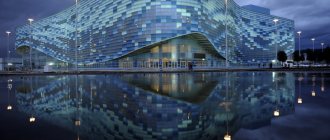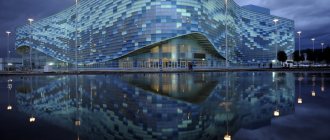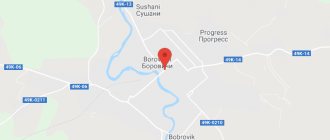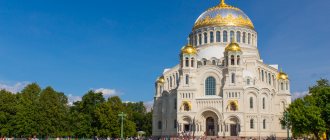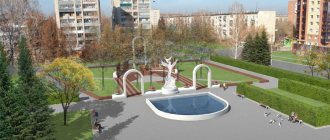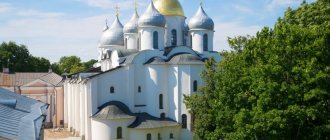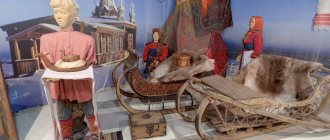The decision to visit the city of Kaliningrad was spontaneous. I love my job, when you can go on a trip and stumble upon air tickets at a good price. Moreover, it was dry autumn, beautiful weather when you can enjoy walks, no one promised us a warm sea, and that’s not what we were flying for. To be honest, before visiting Kaliningrad, I had no idea that it was possible to relax in the Baltics.
Actually, what to do in Kaliningrad, attractions where to go, this article will be. The entire route was built independently and designed for a week including trips around the surrounding area. If you are interested in learning about traveling to the most beautiful city in Russia, read on.
What is remarkable about Kaliningrad and why do people go there on vacation?
Kaliningrad ranks first among popular tourist cities in Russia; we met Poles and even Chinese on its streets. Who is the former Prussian Koenigsberg, and now an enclave, fenced on all sides by Europe and not having land borders with Russia?
It became ours relatively recently, in 1945, that is, after the end of the war, before the partition it was officially the capital of East Prussia. Thanks to its foreign origin, historical architectural buildings remain on its streets, and if you do not have a Schengen visa, only in Kaliningrad you can see with your own eyes the former heritage from previous owners - residences of kings, medieval forts, and instead of churches, visit Gothic churches. In contrast to the broken down Khrushchev houses and noble estates of the prosperous Amalienau region, it is clearly visible here how the Russian spirit coexists with the Prussian one.
In addition to castles, Kaliningrad has perfectly preserved Soviet buildings in a recognizable Stalinist style, the most famous of which is the unfinished House of Soviets, and the premises of Soviet clubs are successfully used while preserving the past appearance.
It’s nice to look at buildings restored without fanaticism, and paving stones are just a separate type of pleasure.
The city received a new name in honor of party leader Mikhail Kalinin, whose monument is located on the square of the railway station.
You can say about the weather in Kaliningrad in one phrase - “If you don’t like the Kaliningrad weather, wait ten minutes.” We were here at the end of September and we never needed the umbrella we brought.
Fishing village
Rybnaya or Fisherman's Village in Kaliningrad is a new quarter built on the Pregolya embankment in the style of a German medieval city. It is located on Oktyabrskaya Street from Honey Bridge to Vysoky Bridge. It is believed that the Fish Market was previously located on this site, which gave the name to the modern quarter.
There are hotels, restaurants, cafes, souvenir shops, business and administrative centers, and sports and entertainment centers. The Lighthouse Tower houses the Madame Boucher restaurant, a glass museum and an observation deck overlooking the city. Pleasure ships and boats depart from the pier.
TOP 20 Kaliningrad attractions where to go
The heart of the city is Kant Island
The historical center of Kaliningrad is concentrated on the so-called Kant Island, and when choosing a hotel, it is better to stay within walking distance to this place. There will be a review in this article about how we found a good hotel in the center and inexpensively>>>
Before the proclamation of Soviet power, the historical area was called Kneiphof, it housed more than 300 houses of wealthy residents, and the island itself was connected to the mainland by five bridges along which a tram ran, the rails of which can today be seen in front of the cathedral. After the military bombing on Kant Island, only the Cathedral survived; the remaining buildings were erected on the site of the ruins by modern architects and have nothing to do with the Middle Ages. You can immerse yourself in the history of the place on a sightseeing tour from Tripster, prices from 600 rubles, where a professional guide will tell you about the complex history of the city, its German and Russian periods
Why is the island called after Kant? Surely you have heard about such a philosopher as Immanuel Kant, and the birthplace of the German founder of the theory of knowledge was the city of Konigsberg. After the death of the great scientist, he was buried in the tomb of the Cathedral, and therefore today the island bears the name of the philosopher. Approaching the wall of the chapel behind the fence you can see the famous tomb of Kant, which is a pedestal in the form of a stone coffin.
By the way, it was the presence of the remains of the philosopher within the walls of the cathedral that saved the building from the destructive actions of the Soviet troops, when all buildings related to Nazi Germany were demolished. Stalin had great respect for the works of the philosopher, whose thoughts he loved to quote.
Cathedral of the 14th century. Organ
This is the main iconic landmark of Kaliningrad, or as they say now, its calling card. Today’s cathedral is essentially a copy, recreated from ruins, but to be honest, it doesn’t look like one; you feel like you’re in a medieval castle, and not in a remake. The reason for this is red burnt brick, which in appearance resembles the construction raw materials of the last century. Inside the cathedral there are Orthodox and Lutheran chapels with Kant's buried remains, an organ hall and the Kant Museum.
I strongly recommend going to an organ music concert, where you can not only see the magnificent stained glass windows and decoration of the hall, but also feel the high vibrations of the largest organ in Russia, under which the spirit of old Koenigsberg seems to come to life.
Working hours: 10.00 — 19.00
Entrance to the cathedral is free; there are no services in the church. Organ ticket 600 rubles, concert duration 40 minutes. Starts at 12, 14, 16, 18 o'clock. Jazz music concerts are often held in front of the cathedral; admission is free.
Where is it: st. Kanta 1
In front of the cathedral, they installed the medieval layout of the small island state of Kant Island before the war.
In addition, on the walls of the cathedral, authentic epitaphs are built into the brickwork, luxurious for that time tombstones of aristocrats, compiled during their lifetime by the dukes and princes themselves.
Kant's grave and museum
The museum is located in the northern tower of the Cathedral and occupies three floors. Visitors have the opportunity to walk through a narrow spiral staircase and explore the halls where objects from the scientist’s life are presented (dishes, books, letters, candlesticks, medals), as well as the stages of the formation of the Kneiphof district with a model of Königsberg 1937 and an old library of a local nobleman with a collection of books from all over the world.
Kant's grave is located outside the cathedral walls, and you don't need a ticket to see it. After the end of the war, the grave was desecrated several times, so today the approach to the cenotaph is surrounded by an iron fence.
Entrance - adult ticket price 250 rubles, self-excursion, with excursion - 400 rubles, children under 7 years old free
Opening hours - daily from 10.00 - 18.00
Fishing village
A recreated pseudo-complex of the former city quarter of Königsberg, it received its name in honor of the residents who traded in fish. Today, on the site of the trading shops there are three houses in the Prussian style; this is not a village, but rather a place for a leisurely promenade along the embankment and shopping; you can get around everything in half an hour. In buildings overlooking the Pregolya River there are bars, fish restaurants, cafes and hotels; the most popular dish among tourists is Finnish fish soup.
To be honest, I didn’t get the enthusiastic effect I expected; everything was done too modern. In addition, there is no shade, no trees, a minimum of benches, pedestrian paths are not separated from bicycle paths.
Admission is free, the Mayak observation tower is 100 rubles. per person, children under 7 years old free
Where it is located - near Kant Island between the Honey and High Bridges.
Next to the Honey Bridge there is a stall with amazing, crispy puff pastry sticks and delicious teas.
I advise you to buy a boat trip along the Pregolya River in the Fishing Village; it is in no way inferior in interest to a walk along the water canals of Bangkok. It tells quite a fascinating story about the history of the city; from the boat we saw not only the facades of houses in the Prussian style, but also the elevator building with traces of shelling, we drove under a two-tier bridge to the sound of the train.
The cost of a boat trip is from 530 rubles. You can buy a mini tour on the Tripster website, the ships are equipped with open and closed decks - you will be comfortable and cozy in any weather
Church of the Holy Family
We will walk back along the Jubilee Bridge. Following Bagration Street and soon turning onto Krasnoarmeyskaya Street, we will see another famous religious building - the Church of the Holy Family .
Built in the neo-Gothic style, the most famous and spectacular Catholic religious building is now no longer a church, but a concert hall. The building is extraordinarily beautiful; it resembles an ancient knight's castle with many small and one large tower. The acoustics inside are amazing, so it's no surprise that this place now hosts concerts. After the war, the dilapidated building was not restored for a long time and only at the end of the 20th century the organ was installed again. regular concerts and organ music festivals now take place .
- Opening hours : 9:00 – 16:00 daily
- Cost of attendance : concerts - from 350 rubles.
- Address : Kaliningrad, st. Bogdan Khmelnitsky, 61A.
- How to get there : use a variety of transport to stops “pl. Kalinina" or "st. Bagration".
- Tel.
- Philharmonic website (organ music concerts and more):
Museums
If you think that walking through museums is boring and tiring, then Kaliningrad can surprise you; this city has particularly interesting museums where even children will be captivated by the excursion.
Amber Museum
The museum is dedicated to the main Baltic gem - amber, or essentially petrified tree resin. It is located in an old 19th-century fort next to the architectural monument Rossgarten Gate, so you can visit two attractions at once, and you do not need a ticket to enter the courtyard with a fountain and a picturesque tower. Here is the largest amber in Russia and the second largest in the world, weighing 4,280 grams, and most of the museum’s exhibition is devoted to amber products. Souvenirs made from Baltic resin can be purchased here from local merchants; the prices are a little high, but they have the most varied selection in the city.
Where is it located: pl. Marshal Vasilevsky, 1. GPS coordinates - 54.722235, 20.523016
Opening hours: daily from 10.00 - 19.00
Entrance: ticket price 350 adult, 150 school, audio guide 150 rub.
Museum of the World Ocean
As the name suggests, the museum is dedicated to the world’s oceans, as well as shipbuilding. It will be especially informative for those who dreamed of visiting a real submarine and seeing with their own eyes the interior of a real scientific research ship. The exhibitions are located in the main building, where the largest skeleton of a sperm whale in Russia is located, and in the ships moored on the Peter Embankment - the ships "Vityaz" and "Cosmonaut Viktor Patsayev", a submarine and a fishing trailer. Particularly noteworthy among them is the famous ship Vityaz, which took part in the filming of the Titanic and measured the depth of the Mariinsky Trench.
Where is it: Peter the Great embankment, 1
Opening hours: Wed - Sun from 10.00 - 18.00, closed on Monday, Tuesday
Entrance: ticket price 300 adults, pensioners 200 rubles, children under 16 years old. for free
Kaliningrad Museum of Fine Arts
The museum is located in the building of the old Exchange, built in the Italian neo-Renaissance style; the monumental building on the banks of the canal is reminiscent of the landscapes of Venice. And the steps at the entrance with a massive wooden door are guarded by majestic lions. Unfortunately, today it is in a state of disrepair; the interior is in need of repairs, but if you don’t pay attention to the crumbling parquet flooring and dampness, you can admire the paintings of the masters.
Inside are masterpieces by Kuindzhi, Shishkin, Repin, Vasily Kandinsky, as well as artists associated with the art of Koenigsberg. Anyone interested in the genre of fine art can come to broaden their horizons.
Where is it: Leninsky Ave., 83
Opening hours: Tue-Sun: 10.00 - 19.00, closed Monday, Thu: 10.00 - 21.00
Entrance: ticket price adults - 250 rubles, students - 200 rubles, schoolchildren and pensioners - 150 rubles.
Bunker Museum
The Bunker Museum is unique in that it is a real German bunker from World War II that has been converted into a museum. In the elongated room was the last lair of the commandant of the city of Königsberg, General Otto Lasch. Inside, not only is the atmosphere of the German headquarters recreated, but there are also mannequins of fascists and dogs. The dugout is small - 15 rooms, in 40 minutes you can listen and examine everything. A worthy historical place where you can immerse yourself in the atmosphere of Konigsberg during its assault.
Where is it: st. Universitetskaya, 2
Opening hours: daily 10.00 - 18.00, Monday - closed
Entrance: ticket price adults - 200 rubles, for students - 120 rubles, for pensioners - 150 rubles, schoolchildren - 100 rubles, children under 7 years old free
Museum-apartment Altes Haus
I recommend anyone who is interested in history and interiors to visit an old German apartment from the beginning of the last century with the quaint name Alter House, which means old house. The Amalienau district in which the apartment is located is no less picturesque - it has narrow streets paved with pre-war paving stones with Prussian-style mansions. The entrance to the museum from the street evokes a separate visual delight - a carved wooden door in the front door, oak twisted staircases, ancient but well-preserved tiles on the floor and stained glass windows.
Inside the room, the atmosphere of German life is recreated with a rich collection of household items - waffle tins, fireplace tongs, combs on the dressing table; at one moment you can take a fascinating journey back in time to old Prussia. In addition, in a private museum you are allowed to touch objects, sit on the most beautiful chairs from the era of pre-war Europe, and feel the spirit of the Prussian family. A tour of the museum is conducted by guides dressed in the spirit of the time, and in the same autistic cafe you can drink coffee from porcelain cups with baked marzipan
Where is it: st. Krasnaya, 11, walk 200 meters from the Central Park transport stop
opening hours on the museum’s website.
Entrance only with a guided tour, duration about an hour, ticket price 500 rubles, under 10 years free. Tickets can be purchased on the website
Marzipan Museum. Brandenburg Gate
Marzipan is not only a sweet made from almond flour, but also a traditional Königsberg culinary dish. Entrance to the museum, located in a historical place, is free; a charismatic guide will lead a 10-minute tour about the history of marzipan candies and the Brandenburg Gate. Then visitors are invited to the coffee shop for a cup of delicious marzipan coffee.
Behind the glass display cases are displayed stucco moldings made of marzipan, just as the cathedral and the heroes of Soviet cartoons, Gena and Cheburashka, are made from plasticine. The prices are reasonable, not overpriced, the minimum price is per 100 grams. bar 100 rubles, I recommend it to all those with a sweet tooth to try!
Where is it: st. Bagrationa, 137, Brandenburg Gate. GPS coordinates - 54.697378, 20.494607. Transport stop "Children's Hospital"
Opening hours: daily 10.00 – 21.00
Entry: free
Exchange building
This architectural structure is not only very beautiful, but also famous for the fact that there was once a concert hall here, where Liszt, Schumann, Rubinstein and other famous composers set foot.
Built in the century before last in the neoclassical style, the building is very picturesque; it was restored only in the 1960s; Films were filmed here, and now this building is a youth center.
- Address : Kaliningrad, Leninsky Prospekt, 83.
- How to get there : walk along Leninsky Prospekt.
- Tel . (Youth Culture Center): +7 (4012) 64-34-38.
Historical monuments
House of Soviets
The House of Soviets is the most tasteless urban long-term construction, erected on the site of the former Königsberg Castle and involuntarily became the hallmark of Kaliningrad as an architectural monument of the Soviet Union and its collapse, because after the collapse of the USSR the construction of the building was frozen. The gray building, which resembles the letter H from a distance, consists of two towers connected by a passage. Opposite is an abandoned square with fountains overgrown with reeds and grass.
Today, the House of Soviets is an abandoned building with broken windows, the interior of which resembles the Abkhaz apocalypse - trees grow on the balconies, the walls are painted with unambiguous messages. Access to the building is officially closed, but those who are especially curious negotiate with the guards for money and go inside to climb to the highest observation deck in the city.
Where is it: st. Shevchenko, 8, near the abandoned Central Square. GPS coordinates - 54.710005, 20.512424. Transport stop "st. Oktyabrskaya"
Drawable double-decker bridge
A unique industrial facility in old Koenigsberg, two steel towers on the sides are designed to raise the bridge while ships are passing, the mechanism works horizontally, and from the outside it looks quite impressive. The bridge is old, close to disrepair, but very colorful, like a monument to pre-war Prussia. It is low, and during boat trips along the Pregolya River, boats sail under it very impressively.
The upper tier of the bridge is intended for trains, the lower - for pedestrians and cars. If you travel around the area on a Lastochka, be sure to take a ride on it.
Where is it: st. Zheleznodorozhnaya, near the Petra embankment. GPS coordinates - 54.705733, 20.489556. Transport stop "Customs"
Forts
Numerous forts and gates of Kaliningrad are a reminder that Koenigsberg was once a fortress city. The brick buildings performed a defensive function, accommodated a garrison of up to a company of soldiers and several cannons, and had the code name “Night feather bed of Koenigsberg.” As you can see on the map, they are located in a circle, protecting the city from all sides.
The forts were named after the great German commanders and kings; there were 15 of them in total, of which the best preserved to this day are:
- Fort No. 1 "Stein", st. Moskovsky Prospekt, 36. One of the best preserved buildings, admission is free
- Fort No. 2 "Bronzart" - closed to the public, private property
- Fort No. 3 “King Frederick I”, st. Alexander Nevsky, 230A. Free entry, abandoned
- Fort No. 4 "Gneisenau", st. Gorky, 301. Admission is free, abandoned, falling apart
- Fort No. 5 “King Frederick William III”, st. Bulatova. Admission is paid, the ticket office is open from 10.00 to 20.00. Transport stop "5th Fort"
- Fort No. 5a "Lehndorf", free entry
- Fort No. 9 “Don”, entrance to the Amber Museum, the fort itself can be viewed for free
They are similar in design, so there is no need to visit them all at once. The former military buildings are surrounded by a moat, have a six-pointed structure, and were shelled during the war, so traces of burning and damage can be seen on the walls.
Bus excursions with visits to medieval fortresses and forts from Prussian times are held daily; you can purchase a ticket and choose a convenient time using the form below:
Brandenburg Gate
Of course, it is impossible to leave Kaliningrad without visiting the famous Brandenburg Gate.
This is one of the most ancient attractions; it has come down to us since Prussian times, and the gate not only survived despite the wars, but also retained its function.
They were built in the 17th century and initially served a defensive function. Nowadays there are small shops in the interior. But the main function of the gate is still not commercial, but aesthetic. Well, as already mentioned, a road and tram tracks pass through them.
, 8 gates have survived in Kaliningrad . The rest of the gates (Sackheim, Royal, Rossgarten, Friedrichsburg and so on now) are simply decoration and a reminder of the past.
- Opening hours : 24 hours a day.
- Address : st. Bagrationa, no. 160.
- How to get there : walk from the South Station.
Parks
Kaliningrad is not only a cultural, but also a very green city, so the abundance of parks here is natural. Various varieties of trees and plants grow in city oases; on tennis benches in silence you can read Michael Wieck’s volume “The Sunset of Königsberg.”
Square of victory. Cathedral of Christ the Savior
Victory Square is a favorite of the townspeople, with a good location in the center, spacious and paved with paving stones with a majestic stele in the center and the Cathedral of Christ the Savior. It is pleasant to spend time here on the numerous benches; in the evenings the square and fountains are illuminated; nearby there is a green square and a museum of military equipment. Interestingly, before the victory over fascism, this place was called Adolf Hitler Platz
Where is it: transport stop “pl. Victory", GPS coordinates - 54.720149, 20.501729
Kaliningrad Zoo
The territory of the zoo is impressive; it previously housed the Königsberg Zoo, so it is full of shady alleys with rare plants and historical heritage in the form of sculptures. It will be interesting for children who have only seen tropical animals on screen. A giant anteater, three giraffes, two hippopotamuses and a Ceylon elephant live here, and brown bears are kept in open enclosures without bars. Visitors are encouraged to come during feeding hours of the animals to catch the touching tricks of our little brothers.
Where is: Mira Ave., 26, transport stop "Zoo", GPS coordinates - 54.722791, 20.488617
Opening hours: daily from 09.00 - 20.00 (summer), 09.00 - 17.00 (winter)
Entrance - 250 rubles. adult ticket, children 4 - 18 years old - 80 rub. Parents of small children also have the opportunity to rent a small car. At the entrance you can download a free application with an audio guide with Drozdov’s voice
Amalienau district
The Amalienau district is the most picturesque location in Kaliningrad, where there are luxurious German villas, some of which are monuments of pre-war architecture. There is not a single duplicate building here, and some are still lived in by the descendants of the original owners. Moreover, they are prohibited from making any changes to the appearance of the buildings or installing solid fences, which is why tourists have the opportunity to admire the carefully restored facades, ancient wooden balconies and terraces.
The houses resemble funny gingerbread houses with tiled roofs and medieval castles, and look as if they were the scenery for Hoffmann's fairy tales. The main decoration of Amalienau is the former Lutheran church - the Church in memory of Queen Louise; today the church houses the regional puppet theater.
Where is it: stops - “st. Chestnut Alley", "pr. Mira", "DK Rybakov", "st. Kommunalnaya", "PKiO", "st. Nakhimov." Learn about the history of Prussian villas from local guides; educational excursions are held daily around the German Quarter:
Curonian Spit
A wonderful and picturesque place to visit in Kaliningrad according to the advice of locals. A thin strip of land goes into the distance and, as it were, dissolves among the waves of the Baltic Sea and the calm Curonian Lagoon. You can walk here absolutely free at any time; by the way, there are excellent holiday accommodation options;
Neighborhood
Curonian Spit
The Curonian Spit is not only a nature reserve bordering Lithuania, it is a narrow 98-kilometer stretch of land washed by the Baltic Sea on one side and the Curonian Lagoon on the other, and the Russian part can be driven in 40 minutes. Honestly, I have never seen such landscapes anywhere else, even the snow-white beaches in Anapa cannot compare with it, this is completely different - this is space in its purest form. Snow-white dunes of quicksand stretching for many kilometers into the distance mixed with pine forests and lakes, where wild boars hide between the trees and gloomy cormorants sit on the branches.
The full report on our independent trip to the Curonian Spit can be read here>>>
Ecological trails in the form of wooden floorings have been laid out for tourists, so you won’t get lost. This was also done for the purpose of preserving sand embankments, the fact is that the dunes move and fall into the water, and one person walking along the embankment moves 4 tons of sand.
Efa Height, ornately twisted pine trees or a dancing forest, Muller Height, Swan Lake - this is just a small list of objects that you can visit while on the Curonian Spit.
Entrance - tickets are sold at the checkpoint for 150 rubles. per person + 150 rubles for entry by car, children under 12 years old free
How to get there: the park is 6 km away. from the city of Zelenogradsk, bus 593. There are only a few cafes at 50 km of the reserve, stock up on a snack ahead of time, and don’t miss the chance to try real Lithuanian ice cream. Guided tours without crowds of tourists are held daily, you can book a seat on the bus directly from your phone on the Tripster website
Svetlogorsk former Raushen
My visit to Svetlogorsk left me with a fabulous impression, as if I had actually visited the streets of a medieval year. This is a small cozy resort town with velvet sand, narrow cobblestone streets and colorful painted houses.
There are a lot of remnants of Soviet life in Svetlogorsk - a sundial with a mosaic representing images of the zodiac signs, soda machines and a cable car with cute yellow cabins.
How to get there: the distance between Kaliningrad and Svetlogorsk is 35 kilometers, you can get there from the railway station at Lastochka in 40 minutes; from the bus station on regular buses departing every half hour. Sightseeing excursions depart daily from Kaliningrad to Svetlogorsk, where you will be taken to the most interesting places and introduced to local cuisine; you can book a place on the website>>>
TOP - 10 attractions of Svetlogorsk in 1 day can be viewed here>>>
Baltic Spit
Another spit of the Kaliningrad region is located in the city of Baltiysk - the westernmost city of Russia, which is the base for the naval fleet. Taking a ferry is the only way to get to this natural phenomenon. The state border with Poland runs on a narrow isthmus; the length of Russian territory is 35 kilometers. The spit consists of sand dunes and vegetation, which essentially holds moving tons of sand.
How to get to Baltiysk: the distance between Kaliningrad and Baltiysk is 40 kilometers, you can get there from the railway station at Lastochka, departures 2 times a day; from the bus station on regular buses departing every half hour
Entry is free
How to get from Baltiysk to the spit: by ferry daily from 07.20 to 21.30, in the opposite direction - from 07.30 to 21.35. Ticket price: adult 70 rubles, children 40 rubles. The ferry departs from the pier next to the monument to Peter I. Guided excursions depart daily to the Baltic Spit; you can book a seat on the bus online on the Tripster website
What to do on the Baltic Spit, besides walking and the sea:
- visit the western fort
- see the abandoned German airport Neutief
- take a walk on the South Pier with the green lighthouse
- feed a flock of white swans at the pier of warships
- collect raw amber on the beach
TOP - 10 forbidden Baltiysk, what to see in 1 day yourself, you can find out here>>>
Village Yantarny
Palmniken, now Yantarny, is famous for the fact that in the village there is the only amber factory in the world with a museum (adult ticket 130 rubles), and the beaches of Yantarny are honorably marked with a blue flag as the best in Russia. The place also has a sad history: during the war, about 3 thousand people were shot at the plant’s mine; in memory of the victims of the Holocaust, a poignant monument was erected on the seashore in the form of thin hands stretching to the sky, on which are engraved the numbers of concentration camp prisoners.
Mostly tourists come here for a beach holiday, because the beaches in Yantarny are the most spacious and spacious, the coastline is very wide and long, you don’t need special shoes here like on pebble beaches, and you can sunbathe without a sunbed by spreading a towel right on the snow-white soft sand.
How to get there: the distance from Kaliningrad to Yantarny is not close, about 50 km. , there is no railway connection, a regular bus runs from the bus station 5 - 6 times a day. You can visit Yantarny as part of an excursion, where you will go up to the observation deck of the plant to examine the largest amber deposit in the world
entrance sign "Maiden of the Baltic"
Zelenogradsk former Kranz
Zelenogradsk is a Russian health resort reminiscent of an ancient German town; it is undeservedly visited when passing through to visit the Curonian Spit. In the last century, it was a Prussian resort; people came here from all over the Baltic to improve their health in the mud baths and mineral springs. Zelenogradsk is also an unspoken symbol of cats or a city of mustachioed tabby cats)
Things to do in Zelenogradsk:
- visit the Murarium cat museum (ticket 150 rubles)
- see an unusual exhibition at the Museum of Skulls and Skeletons
- go to the local history museum, built in the style of Russian architecture and Gothic (entrance ticket 100 rubles)
- leisurely walk along the cobblestone streets with buildings from the late 19th century
Where it is, how to get there: the distance between Kaliningrad and Zelenogradsk is 34 kilometers, you can get there from the railway station at Lastochka in 40 minutes; from the bus station on regular buses departing every hour
Konigsberg Cathedral
Cathedral
Address: st. I. Kanta, house 1. Website: sobor-kaliningrad.ru
The symbol of the city of Kaliningrad and one of its main attractions is the Cathedral, located on Kant Island. The cathedral was first mentioned in 1333, made in the brick Gothic style, located on the island of Immanuel Kant (formerly Kneiphof).
During the Second World War, the cathedral was burned out and stood in ruins for a long time. It is believed that it was not completely demolished by the Soviet authorities only because the philosopher Kant was buried on the territory of the cathedral. Only in the 90s of the last century did the restoration of the cathedral begin.
Immanuel Kant's grave
Nowadays the Kant Museum is located here and organ concerts are held. The cost of a ticket to the museum is 250 rubles, for schoolchildren and students - 100 rubles.
Monument to Duke Albrecht
Duke Albrecht (1490-1568) is considered the first Duke of Prussia and the last Grand Master of the Teutonic Order. The modern monument is a copy of the Reusch monument, which stood at the royal castle and was lost after World War II.
A new monument to the Duke was erected in 2005 near the Cathedral - the place where the Duke is buried.
Prices for excursions in Kaliningrad
When you come to a city for a couple of days, you always want to take in as many educational and intriguing sights as possible. Sometimes, an excursion program is an excellent solution. City guests are offered:
- An evening tour of the city and a boat trip will allow you to appreciate the architecture and features of Kaliningrad, see many significant places and enjoy a mini-trip along a quiet, calm river. The cost of the program is 950 rubles. The tour starts at 17.00 on Tuesdays and Fridays;
- You can visit the amazing ancient quarter of Amalienau and appreciate the luxurious life of aristocrats, their luxurious villas and interesting architecture of buildings. The price of such a walk is 2000 rubles, trips are carried out daily;
- a tour of the so-called “fishing places” will appeal to tourists who decide to take a gastronomic trip to Kaliningrad. The program includes attending tastings and getting acquainted with the peculiarities of the cuisine of this region. You can try the delicacies of the sea on Sunday at 10.00 and 17.00. On other days, you should check the start time of the trip. The cost of the excursion is 2220 rubles.
The sights of Kaliningrad and the surrounding area are so diverse and exciting that anyone can find something interesting to their liking. Many museums, modern restaurants, ancient and innovative buildings and monuments always await visitors to the city.
Programs in the following areas:
Trips around the area
History and architecture
Review programs
Gastronomic tours
The cost of excursions in Kaliningrad should be checked with the guides. It may vary depending on the month and day of the week of the program.
Where to stay
The city does not experience a shortage of hotels and apartments, which has a positive effect on prices. For 2.5-3 thousand rubles per day you can rent a room or an entire apartment almost in the city center!
We recommend the simple, but equipped Apartments at Sommera, within walking distance of the Amalienau district and the cathedral. And also an apartment near Kant Island, which is a very functional studio of 35 m2 with a fresh renovation and brand new furniture.
Pay attention to the brand new Quokka mini-hotel, which hasn’t even had time to accumulate reviews yet. Inexpensive, clean, apparently cozy, located near the North Station.
Guests also praise the Orion guest house, located near the city center. Comfortable rooms, friendly staff, hearty breakfasts served... And the price is low compared to other nearby hotels.

